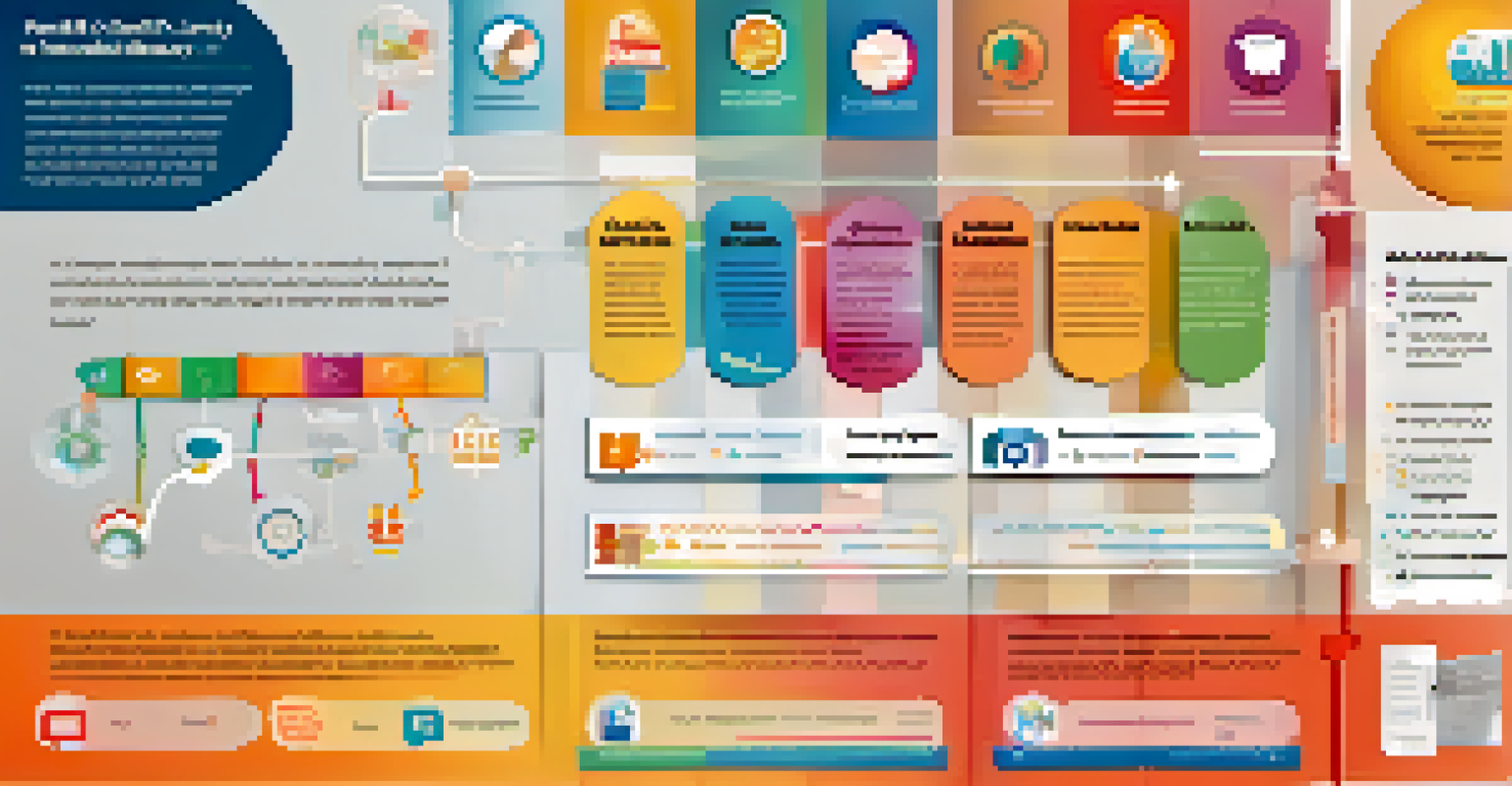Digital Health Literacy: Empowering Citizens for Better Care

Understanding Digital Health Literacy and Its Importance
Digital health literacy refers to the ability to find, understand, and use health information through digital means. In today's tech-driven world, it’s crucial for individuals to navigate online resources effectively. This skill not only helps in making informed health decisions but also empowers patients to engage actively with their healthcare providers.
The greatest medicine of all is to teach people how not to need it.
As more health services transition to digital platforms, having a solid grasp of digital health literacy becomes essential. Patients who are well-informed can better manage their conditions and adhere to treatment plans. This leads to improved health outcomes and overall satisfaction with care services.
Moreover, digital health literacy can bridge gaps in healthcare access. By understanding how to utilize telehealth services or online health records, individuals can overcome barriers related to location or mobility, ensuring they receive timely care without unnecessary delays.
The Role of Technology in Enhancing Health Literacy
Technology plays a pivotal role in transforming how we access and understand health information. From health-related apps to comprehensive online databases, the resources available today are vast. However, the challenge lies in ensuring that individuals know how to use these tools effectively.

For example, mobile apps can remind patients to take their medications or help them track symptoms. When users engage with these tools, they gain insights into their health that can lead to more meaningful conversations with healthcare providers. This not only fosters a collaborative approach to care but also builds trust.
Digital Health Literacy Empowers Patients
Understanding and utilizing digital health resources enhances patient engagement and leads to better health outcomes.
Furthermore, online forums and social media platforms allow patients to share experiences and learn from one another. By leveraging these digital communities, individuals can gain perspectives that enrich their understanding of health issues, creating a more informed patient population.
Barriers to Digital Health Literacy and How to Overcome Them
Despite the benefits of digital health literacy, several barriers can impede individuals from fully utilizing these resources. One major hurdle is the lack of access to technology, particularly in underserved communities. Without reliable internet connectivity or devices, people may struggle to seek out essential health information.
In the age of information, ignorance is a choice.
Another barrier is the varying levels of digital skills among individuals. Some may find it challenging to navigate health websites or apps, which can create frustration and disengagement. Providing education and training opportunities can empower these individuals, equipping them with the necessary skills to leverage digital health tools effectively.
Lastly, misinformation can spread rapidly online, leading to confusion and mistrust. To combat this, healthcare organizations must prioritize clear, evidence-based communication in their digital content. By promoting reliable sources and educating patients on how to identify trustworthy information, we can foster a healthier, more informed society.
Empowering Patients Through Education and Resources
Education is key to enhancing digital health literacy. Healthcare organizations can offer workshops, webinars, or easy-to-follow guides that teach patients how to access and use digital health resources. This proactive approach not only builds confidence but also encourages patients to become more involved in their healthcare journey.
Additionally, creating user-friendly resources is essential. Websites and apps should be designed with simplicity in mind, ensuring that users of all ages and backgrounds can navigate them easily. Clear instructions, tutorials, and customer support can make a significant difference in user experience.
Technology Bridges Healthcare Gaps
Innovative tools and platforms improve access to health information, helping individuals manage their health effectively.
Moreover, partnerships between health organizations and community groups can help spread awareness about available digital health resources. By reaching out to diverse populations, we can ensure that everyone has the opportunity to improve their health literacy and, ultimately, their health outcomes.
The Impact of Digital Health Literacy on Patient Engagement
When patients are equipped with the skills to understand their health information, they become more engaged in their care. Active participation can lead to better adherence to treatment plans and increased satisfaction with healthcare services. When individuals feel empowered, they are more likely to take charge of their health.
Moreover, engaged patients often communicate more openly with their healthcare providers. They ask questions, express concerns, and share relevant information about their symptoms and lifestyle. This two-way communication can enhance the quality of care and enable providers to tailor treatments to meet individual needs.
Ultimately, fostering digital health literacy transforms the patient-provider relationship. Rather than a one-sided interaction, it evolves into a partnership where both parties work together towards better health outcomes, benefiting everyone involved.
Future Trends in Digital Health Literacy Initiatives
Looking ahead, the future of digital health literacy initiatives appears promising. As technology continues to evolve, we can expect more innovative solutions to enhance patient education. For instance, artificial intelligence and machine learning can personalize health content, ensuring that information is relevant and accessible to each individual.
Additionally, gamification is gaining traction as a way to engage users in their health journeys. By turning health education into interactive experiences, patients may find learning about their conditions more enjoyable and motivating. This approach can lead to better retention of information and encourage proactive health management.
Education is Key to Overcoming Barriers
Providing training and user-friendly resources can help individuals develop the necessary skills to navigate digital health services.
Finally, as telehealth becomes increasingly mainstream, health literacy will be critical for maximizing its benefits. Equipping patients with the skills to navigate these services will ensure that they can take full advantage of the convenience and accessibility that digital health platforms offer.
Conclusion: The Path Forward for Digital Health Literacy
In conclusion, digital health literacy is an essential component of modern healthcare. By empowering individuals with the knowledge and skills to utilize digital health resources, we can enhance patient engagement and improve overall health outcomes. The journey towards better health literacy requires collaboration among healthcare organizations, technology providers, and communities.
As we work together to address barriers and educate patients, we pave the way for a healthier future. Encouraging open dialogue and ensuring access to reliable information will be key in this endeavor. With a united effort, we can create a landscape where everyone can thrive in their health journey.

Ultimately, promoting digital health literacy not only benefits individuals but also strengthens the entire healthcare system. When patients are informed and engaged, we can expect to see a shift towards more personalized, effective care that meets the needs of diverse populations.